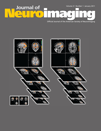Extraparenchymal Neurocysticercosis in Albuquerque, New Mexico
J Neuroimaging 2011;21:38-43.
Abstract
ABSTRACT
BACKGROUND
Neurocysticercosis (NCC) prevalence is increasing throughout the United States mainly because of immigration from Latin America. Clinicians may fail to recognize the extraparenchymal disease because they do not consider the diagnosis.
METHODS
To analyze neuroimaging and clinical characteristics of extraparenchymal NCC, we retrospectively reviewed all such cases presenting to a major general medical school hospital in the State of New Mexico.
RESULTS
Eleven (30%) of our 37 cases of NCC diagnosed using standard criteria from 1998 through 2004 had extraparenchymal disease. On neuroimaging, 36% of the patients lacked parenchymal cysts, 64% had intraventricular cysticerci, 64% had subarachnoid cysticerci, and 64% had hydrocephalus due to either basal arachnoiditis or direct obstruction of intraventricular pathways. Lumbar puncture was performed in 6 patients. All had a cerebrospinal fluid (CSF) pleocytosis, none had CSF or blood eosinophilia, and CSF antibody to NCC could be absent while present in serum. Response to treatment was frequently suboptimal.
CONCLUSIONS
Extraparenchymal NCC is more frequent than previously thought. Because clinicians outside the Southwest United States are often unfamiliar with NCC as a cause of chronic meningitis, chronic ventriculitis, or hydrocephalus without obvious cysts, the diagnosis of extraparenchymal NCC often depends on the correct interpretation of neuroimaging.




